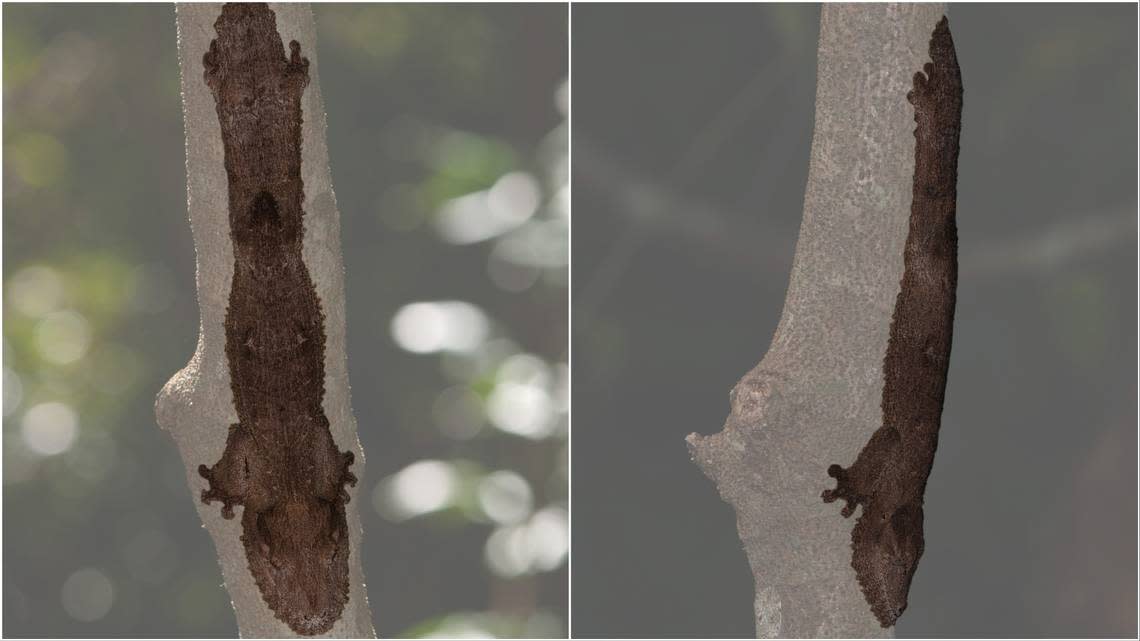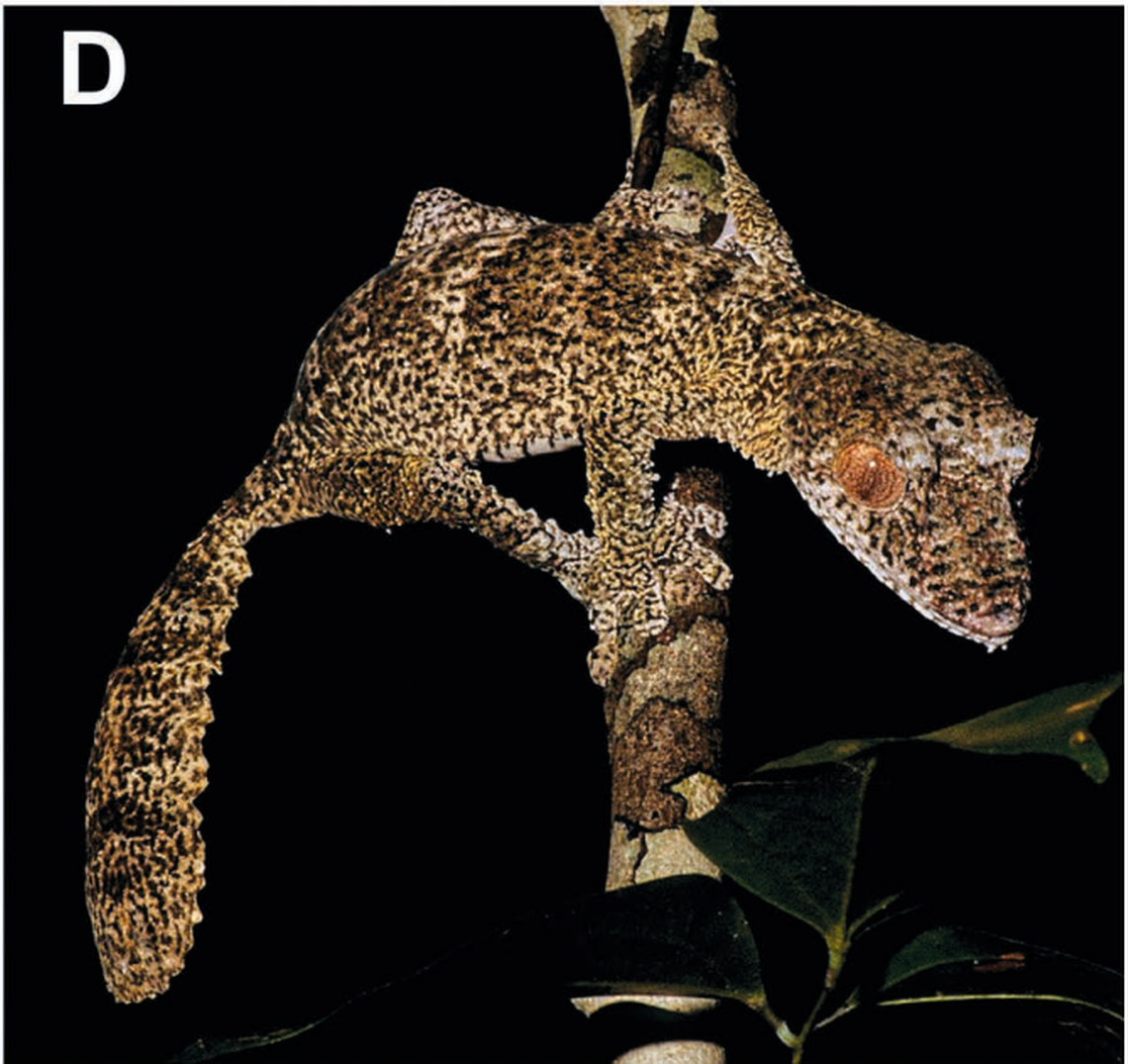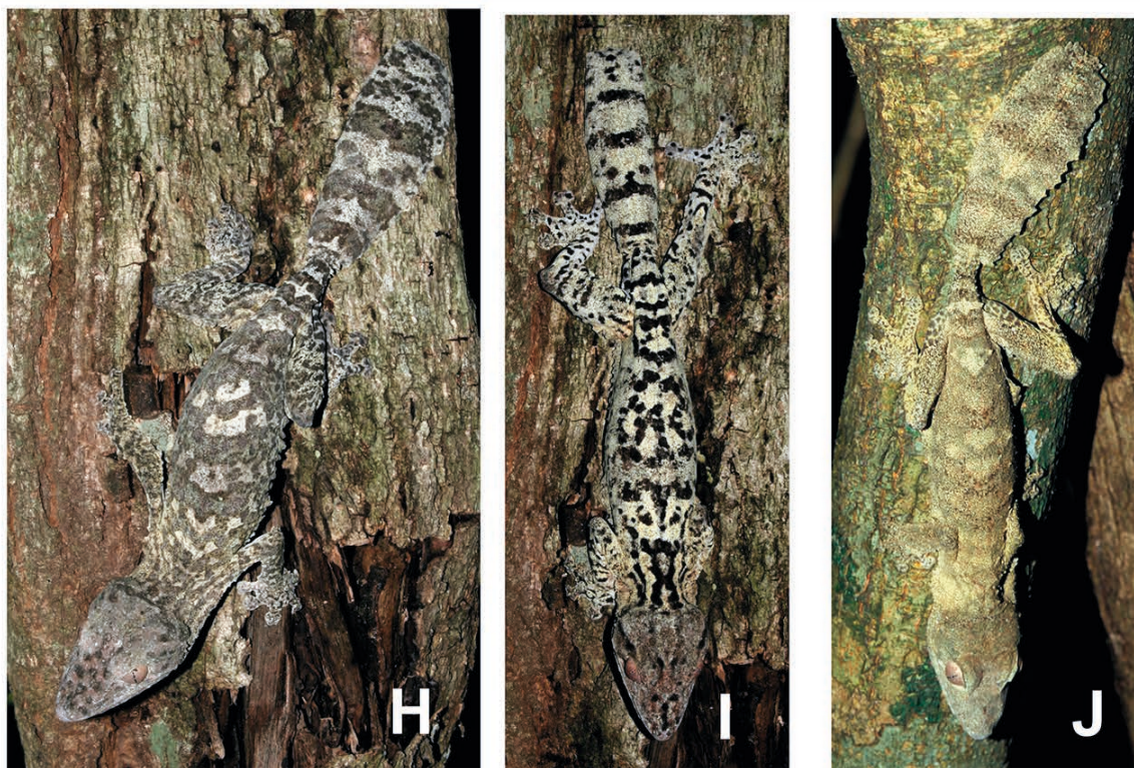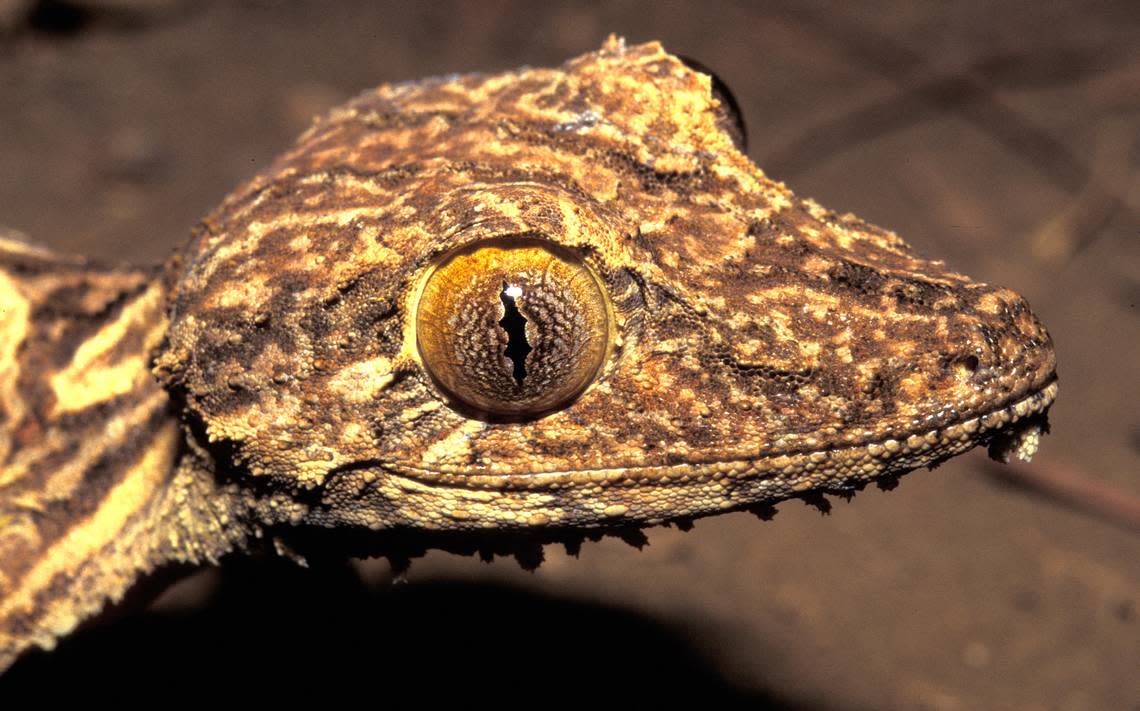‘Large’ fringed creature found lurking at campsite in Madagascar. It’s a new species
Stretched out flat against a tree in Madagascar, a camouflaged creature waited for night to fall. Finally, under the cover of darkness, the “large” animal set out in search of its next meal.
A beam of light swept through the forest. The light illuminated the fringed animal mid-hunt. Scientists took a closer look at it — and discovered a new species.
Researchers set out into the forests of northern Madagascar to survey local wildlife, according to a study published Aug. 15 in the Salamandra German Journal of Herpetology. Equipped with headlamps and flashlights, they searched day and night for a specific type of lizard: leaf-tailed geckos.
“Highly sought after” as pets, leaf-tailed geckos are a “peculiar” and “spectacular” group of lizards, researchers said. These geckos have fringe along their entire body, allowing them an “almost perfect camouflage” when stretched out on tree trunks
During the day, leaf-tailed geckos flatten themselves against branches to hide in plain sight, according to a news release from the University of Copenhagen via Eurekalert. During the night, the animals hunt for food.

Searching forests and campsites, researchers found several “large” leaf-tailed geckos with distinctly “yellowish” or “reddish eyes.” They captured 16 of these geckos and, taking a closer look, identified a new species: Uroplatus garamaso, or the shiny-eyed leaf-tailed gecko.
The shiny-eyed leaf-tailed gecko is a “large” fringed lizard, reaching about 8.5 inches in size. It has a “triangular” head, scaly body and eyes ranging from “golden-yellow” to “reddish.” Photos show the new species perched on a branch.
Researchers described the new species as a “master of disguise,” per the release.

Shiny-eyed leaf-tailed geckos vary in color. Some had a dark brown coloring, photos show. Others had a light tan-brown coloring with darker brown speckles. Still others had a grayish coloring with blotchy brown-black markings. Other photos show yellow-brown, orange-brown and white-brown geckos.
Like other species of leaf-tailed gecko, shiny-eyed leaf-tailed geckos can probably change color and pattern when stressed, the study said.

Researchers found the new species of gecko in nine different forests of northern Madagascar. Shiny-eyed leaf-tailed geckos were most often found at night while hunting or moving around. Some were found at a campsite while one gecko wandered into the research camp during the day. Two pregnant geckos were found, including one that later gave birth in captivity.
The shiny-eyed leaf-tailed gecko was documented previously by scientists, pet traders and pet owners, the study said. “This species has been in the pet trade since at least 2001 and possibly considerably longer, under various names.” Since 2010, shiny-eyed leaf-tailed geckos have been imported to the U.S. and Germany in low numbers, between three to five animals annually.
The new species was identified by its body shape, genitalia, eye color and tongue color, the study said. DNA analysis found the new species had over 8% genetic divergence from other leaf-tailed geckos.
Researchers named the new species after the Malagasy word “maso,” which means “eye” and refers “to someone with bright, shiny eyes.”

Shiny-eyed leaf-tailed geckos “are heavily threatened” because of human activity in their habitats, the study said. The geckos’ natural forests are affected by “cattle grazing and slash-and-burn agriculture.”
The research team included Frank Glaw, Jörn Köhler, Fanomezana Ratsoavina, Achille Raselimanana, Angelica Crottini, Philip-Sebastian Gehring, Wolfgang Böhme, Mark Scherz and Miguel Vences.
‘Shrew-like’ creatures – with pouches and long tails – are new species in the outback
A new invasive species of hornet found in US, experts say. It feasts on honey bees
Creature covered in ‘knob-like warts’ found lurking in lake. It’s a new species
